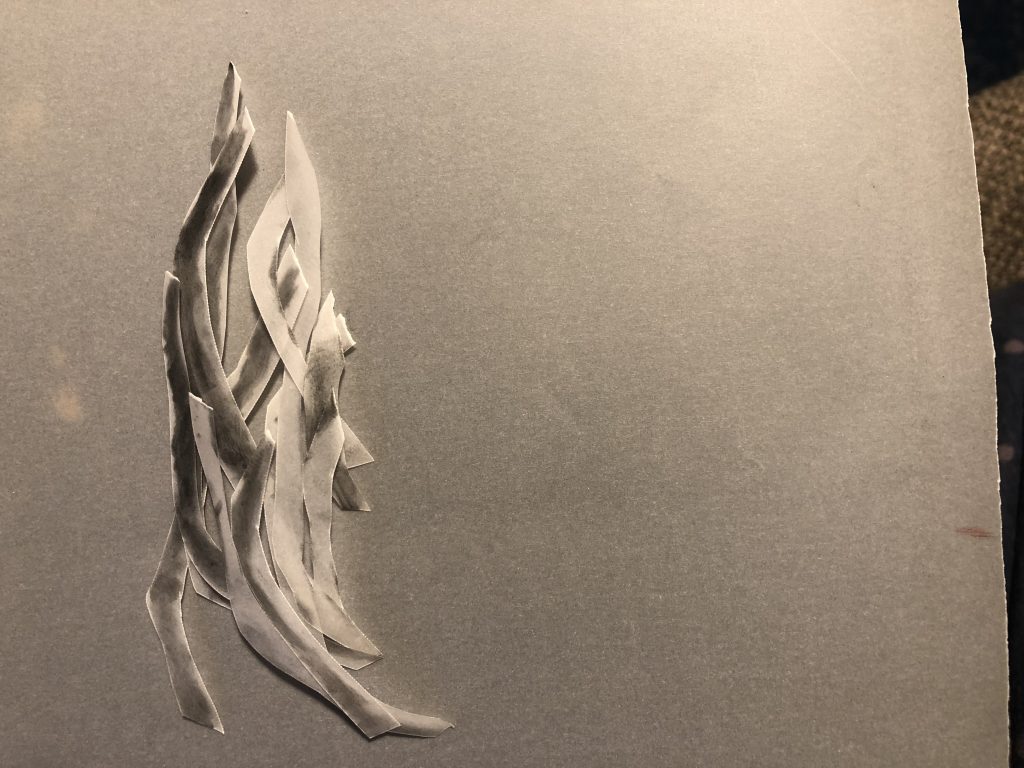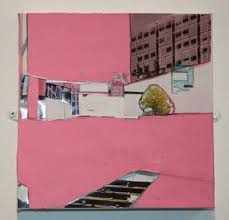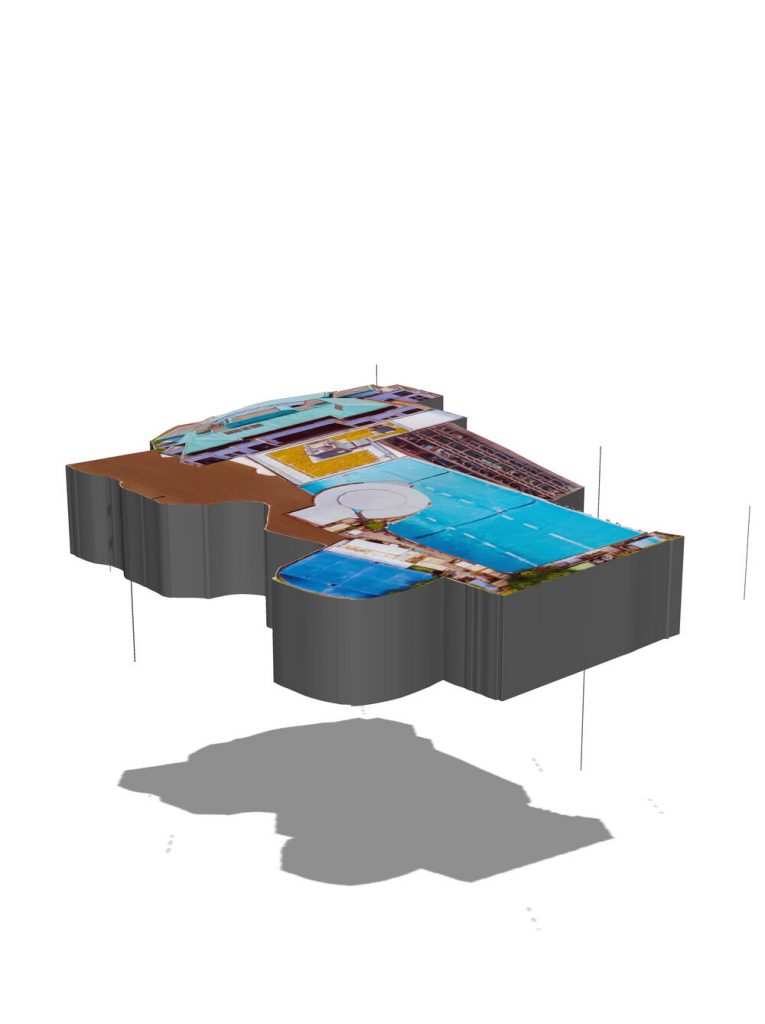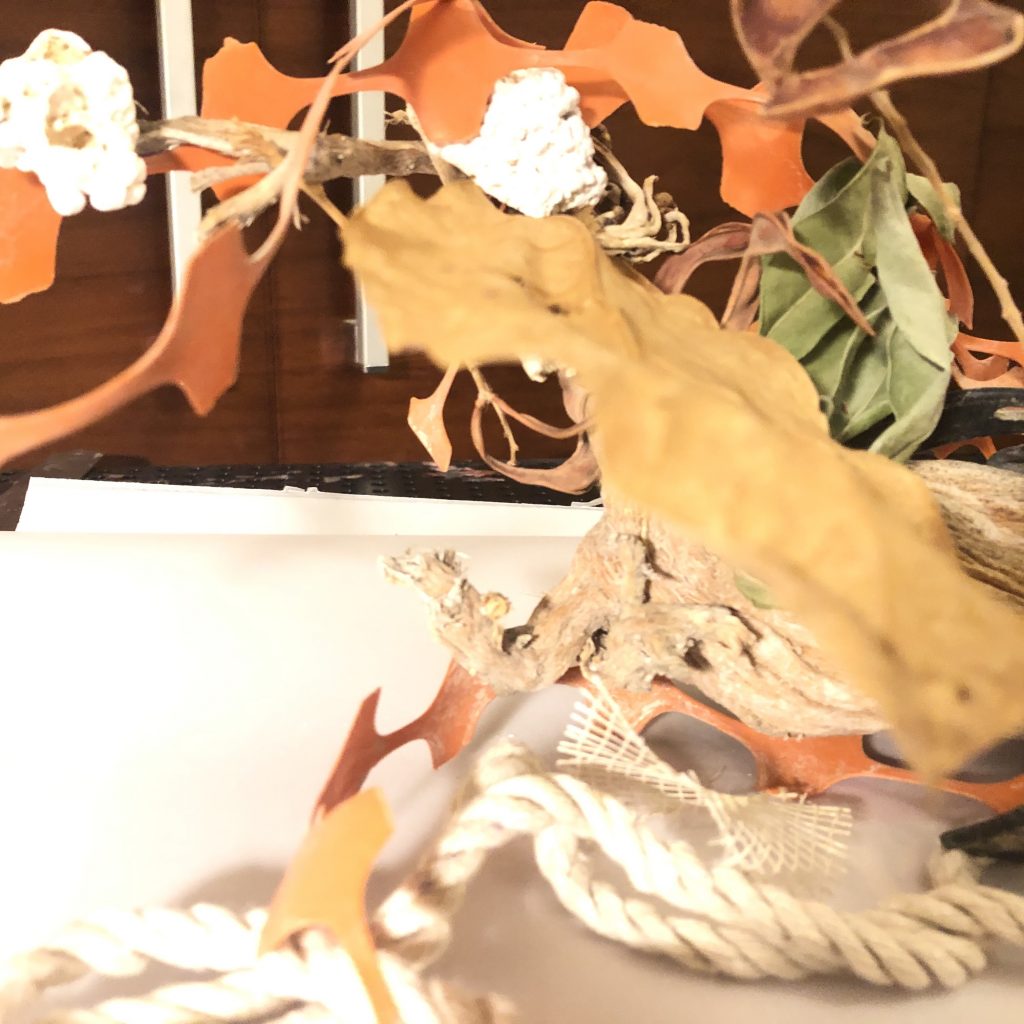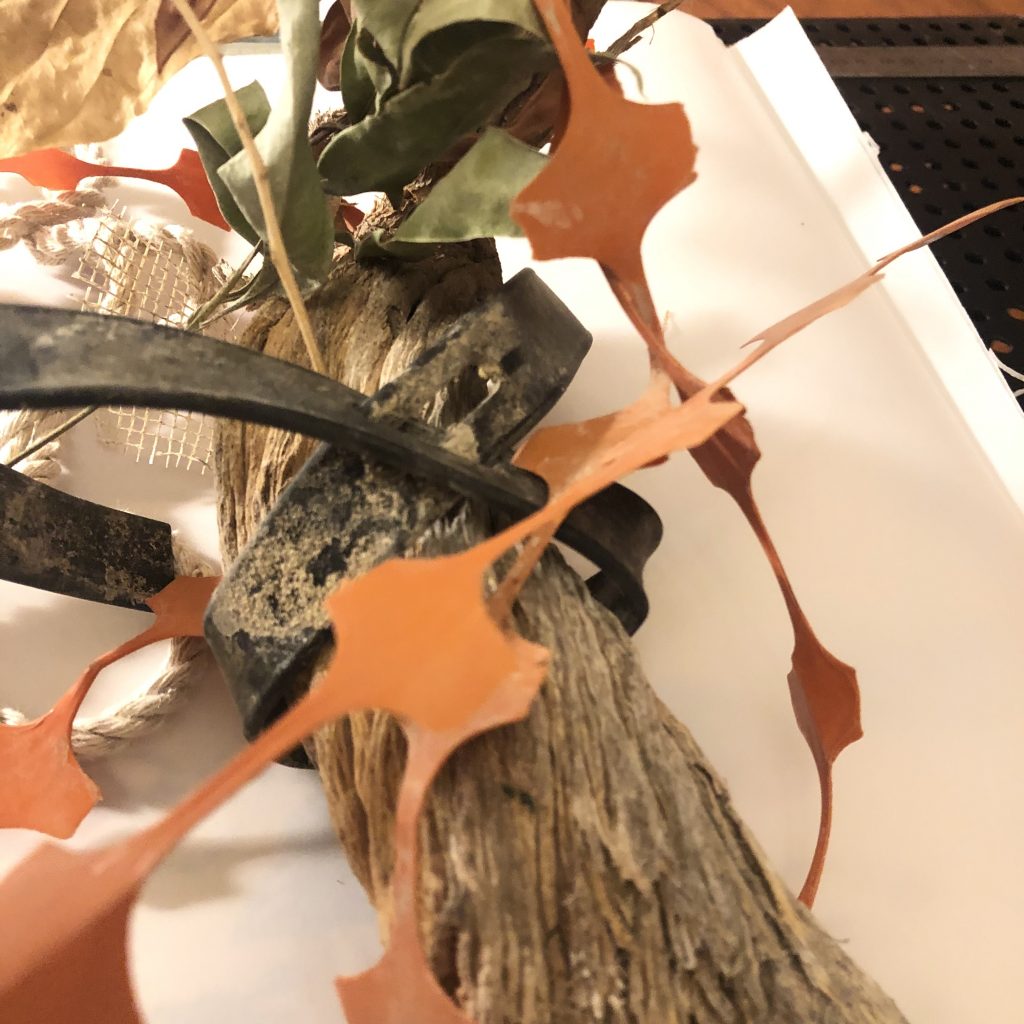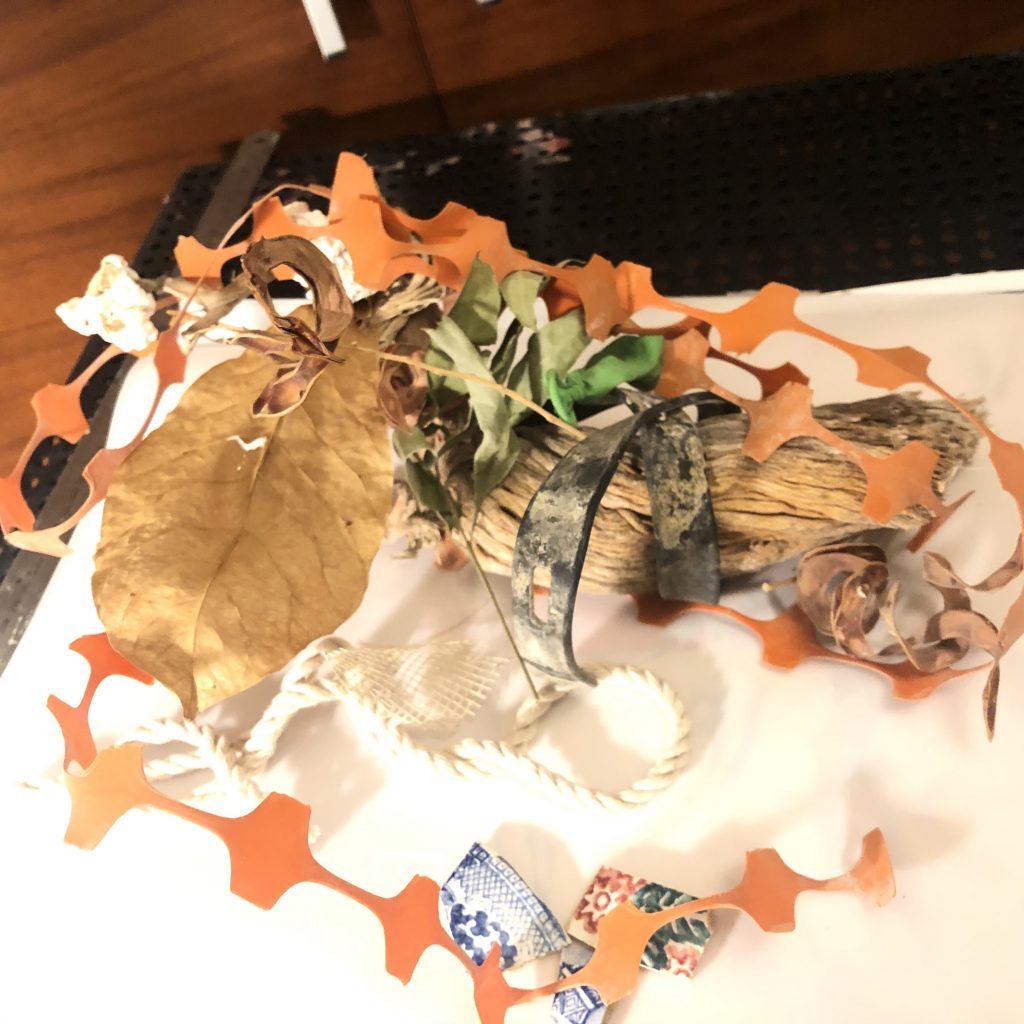an OCA workshop with artist Martyn Hill (2h) on 17 February 2021
The following is an insert of what to expect for this workshop – I appreciated the information.
Fine Art is launching the first, of a new series of Group Workshops-
Wednesday 17th Feb., 2021, 18.00 – 20.00 GMT, UK hours.
‘Un/Common Things’ is a Group Work shop with visiting artist Martyn Hill. This is a two-hour studio-based, documentation and situated curation event. Riffing on the history of the Found Object and Ready Made, you will draw upon personal and domestic objects, art and recyclable materials. Employing collage, assemblage, bricolage, sculpture and installation.
Places are limited to16, to reserve your place go to:
This is a practically focused studio-practice workshop, Martyn will deliver a short introduction including artist recommendations.
This afternoon you will also receive a link to the Padlet, please do engage with this throughout the session and post-workshop. This will be added to , and Martyn would like you all to post a brief introduction including your current course and Level. Perhaps one or two images of your work if you wish. The Padlet is a useful place to comment and ask questions of each others’ work / ideas in a constructive, supportive way. Do make recommendations to your peers on artists, weblinks and publications.
For those of you new to this type of workshop, you will be given some specific tasks / instructions to prompt your own experimentation and construction with your collected materials and fixings. As with any task there is space for you to bring your own understanding and interpretation to them- be playful.
You will mainly be working with materials and objects that you already have to hand. You may wish to consider a range of fixing / fastening media incl. different types of tape, adhesives, Blu/White-Tac, paper clips etc.
In addition to collage, drawing media, card, packaging etc. I recommend sourcing materials that you can recycle from your home environment such as packaging, used envelopes, old newspapers / journals etc., rather than outlying for expensive materials.
Remember to have either a camera, or phone available to record your process, and the works you make in the session. You will also be encouraged during, and after the session to document your collages, constructions, sculptures etc.
After the session there will be a short questionnaire for you to complete, which may take only a few minutes. We appreciate your genuine feedback and comments, as this helps to inform our planning for the next series of Group Work.
Martyn shared work a long list of artists who work with experimental process and ready made/found objects in their art making practice before we started a workshop in which he gave prompts for us to follow. I made a list as best as I could of the names of the artists as I wanted to have a look at some of their practices.
- I was intrigued by everyday objects and simple ideas, but getting to understand one gets pulled in as a viewer to view the work, more accessible,
- being a ‘collector of things’ as an artist
- use humor instead of serious ideas to start the conversation with the viewer
- and then one gets to a deeper meaning of the work, and underlying message?.
- It talks about how we interact with the world, everyday things and the surroundings.
- Objects can mean anything, (all the big ‘themes’ in the world around us – aspects, ideas, things, habits, thoughts, culture’s ephemera, a investigation of the value of the old in a world intent on the new, invoking a sense of bygone innocence, loss, and isolation.) it can become the ‘material’ for your work
Some works stood out in terms of my current studies – EllenGallagher, who looks at repetition and revision: “It is interesting to see the way content surfaces over time, both in my mind and in the skin of the work.”
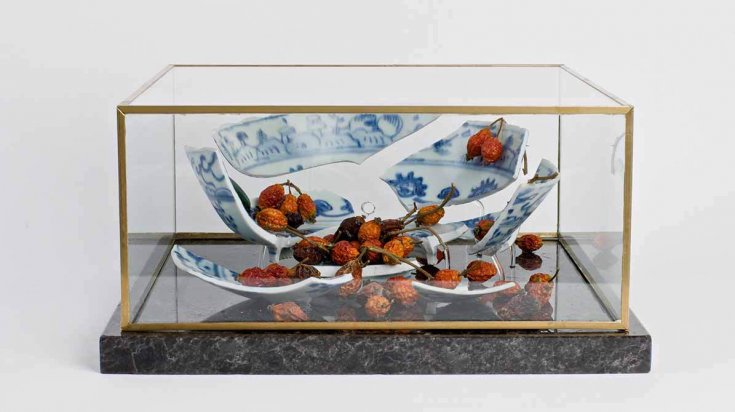
“Born in Utrecht, Dutch artist Bouke de Vries has dedicated several thematics to ceramics and its customisation. He uses his restorer competences so that his « exploded pieces » continue living after their accident. For him, a broken object can be converted into a work of art in its own right, just like the Venus of Milo is venerated despite the complete loss of her arms” and ” I decided to use the material – and the techniques – I was working with. I looked at questions of perfection versus imperfection, beauty in damage, and the place of ceramics in world history, how something like blue and white porcelain became part of the story of global trade and culture.” but to me, even a seemingly small and insignificant fragment can be imbued with the potency of its original creation. when I first start a piece, the broken object itself suggests what I should do with it. as my practice has developed I do also sometimes look for a particular type of ceramic but this can take time.’
Artist Haim Steinbach who explores the role of the artist as a collector and curator of cultural artifacts, said . “We communicate through objects just as we communicate through language,” he has explained. “We see objects, we have feelings about them, and we feel them when we touch them“. I can relate to this tactile and sensuous way of experiencing art making. Over the decades, Steinbach’s project has grown to explore collecting as a psychological state of mind, while also acting as a barometer of consumer culture. On Guggenheim’s site I read the following about the artist: “Steinbach’s art has been associated with Simulationism and Neo-Geo for its incorporation of consumer items and its precise composition. In addition, his practice of appropriating objects has led many critics to draw connections between his work and Marcel Duchamp’s readymades. Steinbach’s art, however, not only relates to the selection and presentation of objects but also explores contemporary consumer culture and our psychic attachments to things. His earlier shelf arrangements included handmade shelves and objects borrowed from friends or found at flea markets.“
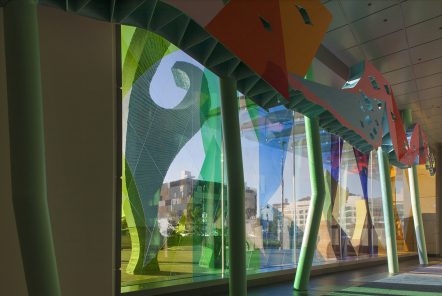
Stockholder employs quotidian goods such as plastic bags and containers, extension cords, lumber, plywood, carpets and furniture, drawing attention to the aesthetic and formal qualities of these often overlooked items while avoiding overt symbolism and narrative storytelling. With deliberate placement and the eye of a master colorist, she maps out a constructed world informed by numerous artistic traditions, including abstract expressionism, color field painting, installation art and minimalism.
Clare Booker – calls herself an artist/human geographer. On her website I read the following: “I am a painter, experimental filmmaker and human geographer, exploring how spatial experience can be visually represented. My art practice is focused on how the methods of collage and montage can represent the spatial collisions and transitions experienced whilst occupying and navigating public spaces, both actual and virtual.” I feel inquisitive to look into her practice. I find her ‘city fragment’ series particularly interesting as it seems like it is ‘digital’ work and looks as if she ‘floats’ them to give it a geographical or topography feel. Seems that she paints mostly with Gouache – the fact that it has a chalky finish and dries quick is what she explores. I think that is why I am currently so in love with my art graf materials – which is watercolour graphite, but also have some colour choices.
I contacted Clare Booker on Instagram and she shared with me that she mostly use found images from the internet, books, films. She uses Google Earth and Street view to do virtual wanderings – which cleary was a great solution to the Lockdown crises we currently experience.

Above image was a ‘screengrab’ from IG, here the artist explained that this painting was produced as the start of her PhD journey in 2012, which then led to her Street View Diaries. She shares her fascination with how she could use Google Earth to augment the viewing experience,( our real experience?). There was a quote of Malevich in this post: If all artist could see the crossroads of these celestial paths, if they could comprehend these monstrous runways and the weaving of our bodies with the clouds in the sky, then they would not paint chrysanthemums.”
I do admire this perspective, I reminds me the the flatness of the area where I currently live, here in Dubai. There is also something that makes me uncomfortable about these images, and I could understand it better. Here in Dubai augmented or ‘imagined visualisations’ are many times how place is shown on brochures and social media – this is not reality as many times these places are partly built, or not even – a the dream of the architect or developer. It says something about real impressions, but then also puts into the front how technology can assist in a situation where change is continuously happening – like in this country/city still growing and redefining itself in terms of identity of place as a city of the world. It talks in a sense to the cultural identity of the city which is young, but simultaneously it is also about the future – imagined, visualized. I am aware of ideas of beautification, which I sometimes interpret as surface/superficial – not authentic?.
In her feedback on the painting above, someone made reference to the artist Diebenkorn and his middle period landscapes. It took me onto another part of learning to have a look at this artists work. (parallel project?)
During the workshop we used our found objects and started off to make a 3d object and also documenting the process.
Then we had to make a 2d out of something or the thing we made in the first part of the process:
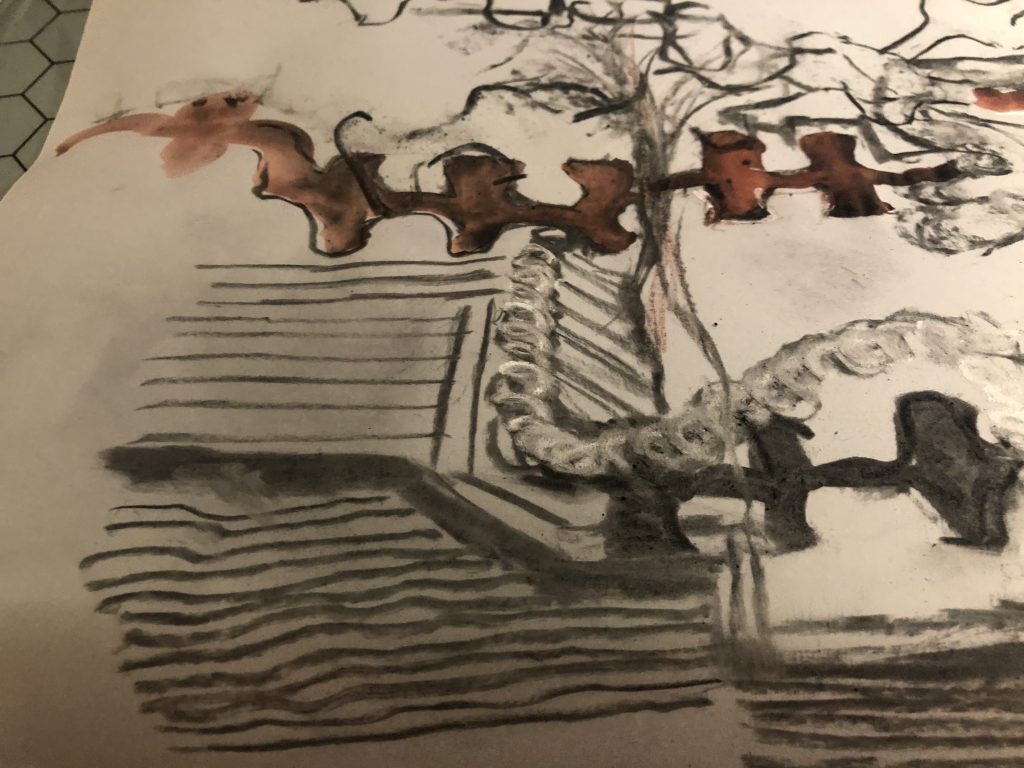
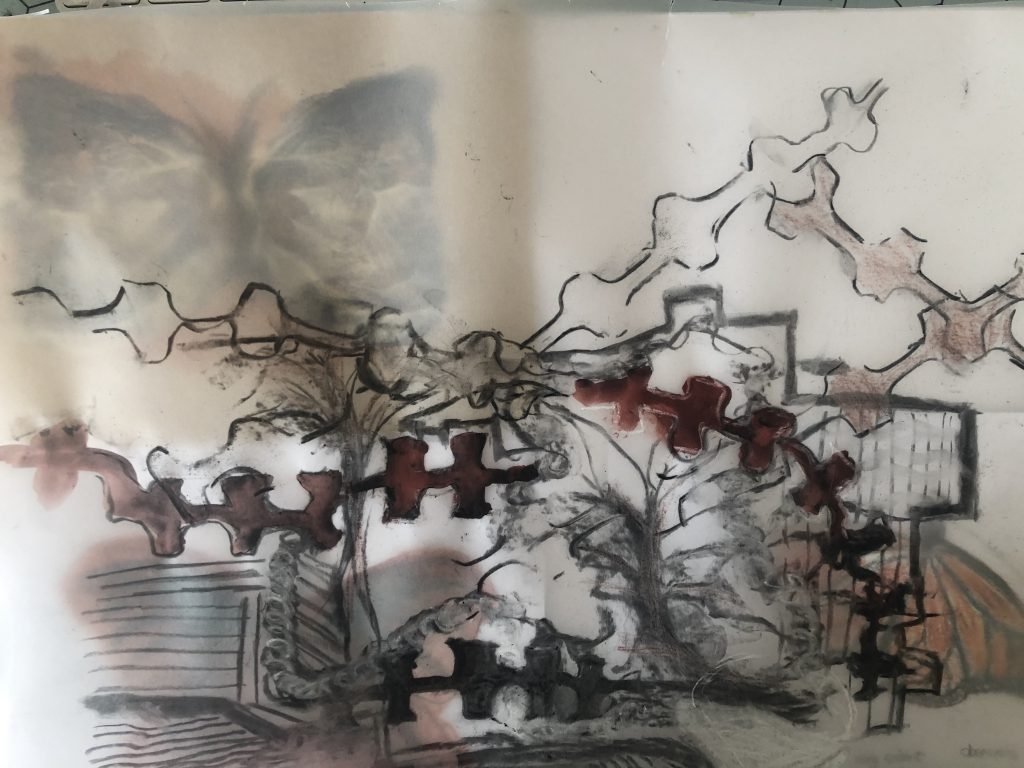
I am at a point where I think if I look at some of my found objects, I can use them repetitively – there is so much to discover in drawing and then transfer that into a painting or even a sculpture like object. I am also more aware of the visual impact of imagery on my own practice. I have not always felt comfortable to take this more experimental route – fear of failing and not having something to show kept me away from this practice. I like the idea of documenting and going back to the work after a time. Some of the materials I used in this process was made with cut outs and other found objects.
Martin talked about trusting your instinctive feel and asking more questions as you follow through with this process. He emphasised to always show something – keep on making.
